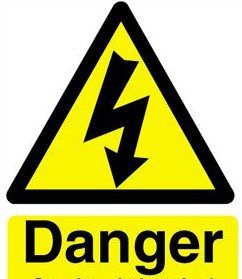It seems that the network operators in NSW and Queensland – and their government owners – are having a tough time finding evidence of the gold-plating of networks, which became public knowledge once Ross Garnaut spilled the beans in his climate change review, and finally got public traction when Prime Minister Julia Gillard deployed it successfully as a decoy for the carbon price.
Given Queensland Energy Minister’s Mark McArdle’s insistence this week that every pole and wire constructed in the state must have been for the public good and absolutely necessary, it is helpful that the Australian Energy Market Operator has produced a new report that identifies seven instances where network infrastructure is being built, but may not be needed.
The report, known as the Economic Planning Study, looks at the benefits of taking an economic cost-benefit approach to network investment across the National Electricity Market (NEM). AEMO says it shows that the timing of most augmentation projects can be deferred, resulting in significant savings in distribution and transmission network costs.
It says there is currently $3 billion in new electricity infrastructure spending planned for 2012–13. But if those augmentations could be deferred by just one year this would represent a saving of $250 million in network costs, which translates to a reduction in customers’ bills. Over the longer term, the benefits would be considerably higher if they could be postponed for longer. And its investigation of a handful of projects suggests more than half of them could be deferred for four years or more.
AEMO is not accusing the networks of deliberating gilding the lily, as it were, in these network upgrades. Whether deliberate or not, there seems to be general agreement that the current system encourages network operators to believe that more investment equals better returns.
The prime motivation for this AEMO document is to argue that there is a better way, and it introduces a cost-benefit approach as a much smarter and more efficient method than the current planning standards that require a fixed level of reliability.
The market operator looked at seven projects, and came to the conclusion that five projects could be deferred – some by up to 7 years. The current timing of one project was confirmed, and the remaining project would have actually been built earlier.
The most capital intensive project was a proposed $191 million plan to build a substation and a new double circuit line to serve the Yorke Peninsula in South Australia. The upgrade is planned for around 2019, but the AEMO study suggests it won’t be needed for another 7 years.
In Queensland, the $14 million installation of a third transformer at the Boulderscombe substation near Rockhampton planned for this financial year is deemed surplus to requirements until 2017/18. In NSW, the construction of a new substation in the Forster/Tuncurry area and the diversion of a 132kV circuit scheduled for late 2013 – for a combined $24.6 million – is deemed unnecessary until 2017/18, while AEMO says the proposed $30 million construction of a second circuit to serve the Avoca and St Mary area could be positioned by up to five years.
These are just a few examples of the massive program undertaken by network operators across the country. The point that AEMO wishes to make is that under the current regulatory framework, which applies in all mainland states within the NEM except Victoria, network businesses are able to receive higher than required allowances for capital expenditure projects which are not economically justified.
Transmission infrastructure is being built to meet high reliability standards without explicit regard to the cost of meeting those standards. “Changes are needed to achieve the balance between a reliable electricity supply and the price people pay,” said AEMO CEO Matt Zema.
“In the longer term AEMO expects an economic planning approach would deliver greater savings by providing more time to develop new generation and transmission solutions and technologies, taking into account slower growth in electricity demand and the response of consumers who are fast becoming more energy conscious,” Zema said.








